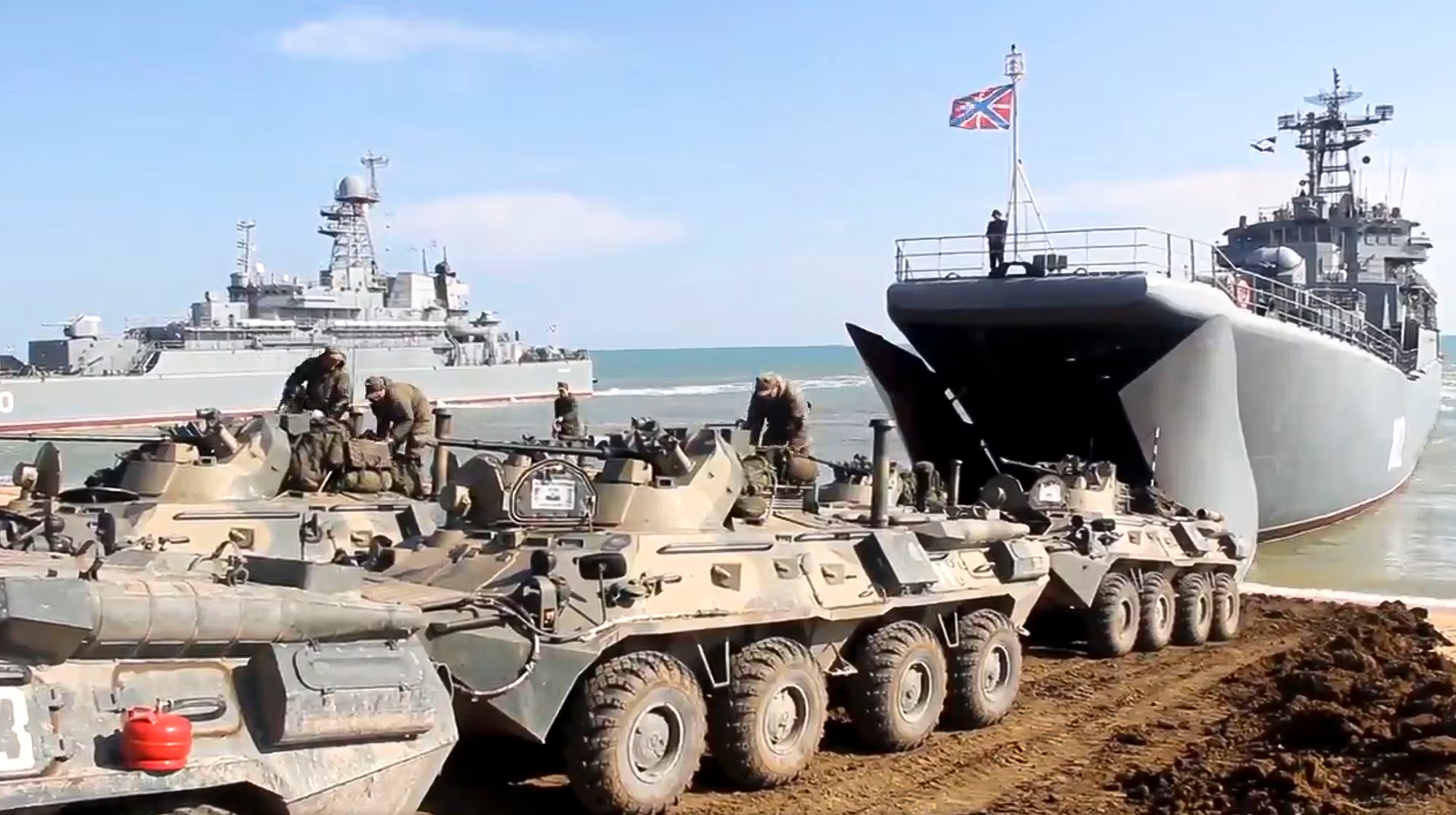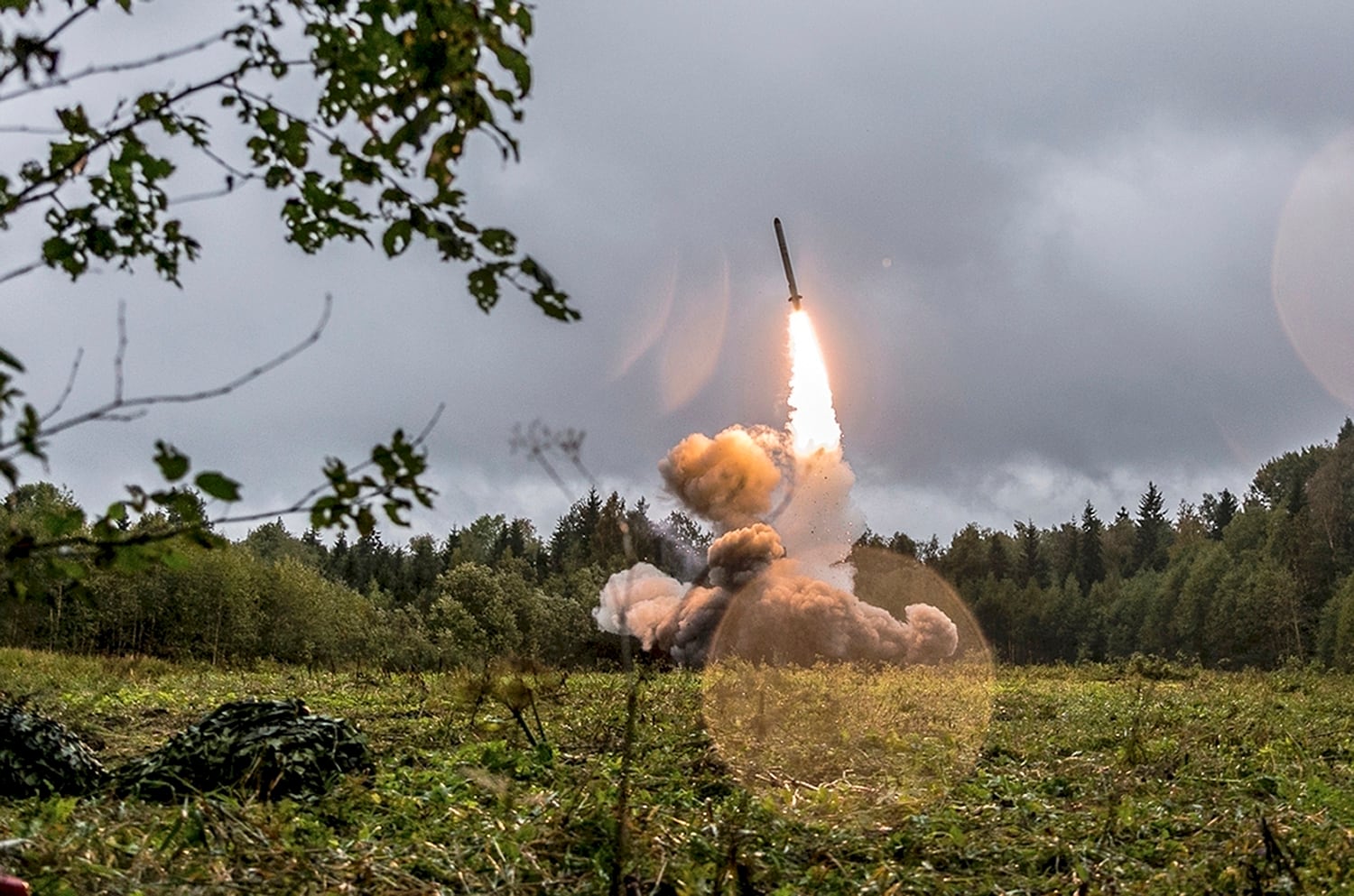Even as U.S. Secretary of State Antony Blinken plans to meet with his Russian counterpart Friday, Russia is increasing the number of troops, weapons, intelligence-gathering and electronic warfare capabilities along the border with Ukraine, and now has the ability to strike Kyiv with medium-range ballistic missiles, according to a recent Ukrainian government assessment.
A new Russian invasion of Ukraine could take place at “any minute,” a Ukrainian official told Military Times Wednesday morning, echoing a similar statement made Tuesday by White House spokeswoman Jen Psaki.
“If you put it in terms of green, yellow and red, I would say we are at yellow-plus,” the official said of the state of alert of Ukrainian forces.
“The issues of creating strike groups near the borders of Ukraine, mobilization, logistical support, transfer of significant military contingents (including by air) from the ‘internal’ military districts of the Russian Federation were practically worked out,” according to the Ukrainian assessment, shared with Military Times.
Russia now has 36 Iskander medium-range ballistic missile systems arrayed around Ukraine’s border, according to the assessment. Many have the ability to hit Kyiv, the Ukrainian government official told Military Times.
“Iskanders are capable of striking objects at a depth of 500-700 km,” or about 300 to 460 miles, according to the assessment. That means missiles could hit
In addition to the missile threat, Russia has increased its intelligence activity against Ukraine, according to the assessment.
“Additional maneuver [signals intelligence] units were redeployed next to the Ukrainian border,” the assessment read. Russian reconnaissance aircraft “fly along the border of Ukraine and above the water areas of the Black Sea and the Sea of Azov” at three times the rate seen at the same period last year.
Russia has also maintained a Reinforced Naval Group in the Black and Azov seas, according to the assessment.
“Elements of the naval landing operation are being worked out,” it states.
RELATED

“Russia continues to deploy troops and maintain reinforced troops near Ukraine’s border to maintain tensions in the region and political pressure on neighboring states,” the assessment found. “In this way, the [Russian Federation] creates a group capable of conducting offensive operations against Ukraine, and redeploys part of its troops from the central and eastern regions … to its western border to keep them there on a permanent basis.”
Russian officials have denied plans to attack Ukraine, instead blaming Ukraine, the U.S. and its allies for fomenting problems. The Russian embassy did not immediately respond to a request for comment.
In all, about 14,000 people have died since Russia annexed Crimea and invaded Ukraine in 2014.
As Blinken visited Ukraine on Wednesday, the Biden administration said it’s providing an additional $200 million in defensive military aid to the country amid the fears of a Russian invasion, according to The Associated Press.
A Ukrainian military official declined to say what was in that shipment.
Like the Ukrainians, the Pentagon does not know Putin’s final plan, spokesman John Kirby told reporters Tuesday.
“We still don’t believe that he’s made a final decision” on whether to attack Ukraine, Kirby said.
But there are no plans to add U.S. troops to the cadre of more than 100 Florida National Guard soldiers in western Ukraine who are training and advising Ukraine’s military, according to Kirby.
“We’re going to continue to watch the situation on the ground and we need to make decisions for force protection purposes,” Kirby said. “We’ll do that but there is no there are no planned additional rotational troops to you to Ukraine at this time,” he said, adding that there are “no changes to what the Florida National Guard is doing on the ground.”
Adding to concerns, Russia is moving stockpiles of ammunition, field hospitals and security services to the border of Ukraine, “which confirms the preparation for offensive operations,” the Ukrainian assessment stated. “Tank, motorized and artillery units from the Central Military District of the Russian Federation continue to be transferred to the areas near the Ukrainian border in the Bryansk, Smolensk and Kursk regions.”
Ukraine estimates there are now 54 Russian Battalion Tactical Groups “on constant alert” near the Ukrainian borders, an increase of two BTGs from the previous week. All told, there are 106,000 ground troops and additional 11,000 naval and aviation troops.
Echoing what Ukraine Brig. Gen. Kyrylo Budanov told Military Times in November, U.S. officials now say Russia could attack through Belarus.
“I think what we should be concerned about is not whether it increases the intent, but whether or not it increases the capability and their ability to launch an invasion of Ukraine with an intent to topple the government,” a senior State Department official said Tuesday afternoon about Russian troop movements into Belarus.
The official expressed alarm at the arrival of those troops on Tuesday.
“Russian military units began arriving in Belarus again under the guise of joint exercises,” the Ukrainian assessment stated.
The latest troop movement adds additional concerns about an incursion through Belarus.
Russia and Belarus have already established a Joint Air Defense and Russian Air Space Force Command Center during “Zapad 2021″ exercise, according to the Ukrainian assessment. The command center has been operating along the borders of Belarus since Nov. 25.
After Zapad 21 ended, Russia left behind S-400 Grodno anti-aircraft systems and Su-30 fighters, according to the Ukrainian assessment.
“In the near future, the number of Russian Air Force aircraft at Belarusian airfields is expected to increase,” the assessment stated.
In addition, on Dec. 18, Belarus’ Minister of Foreign Affairs “declared his readiness to deploy Russian nuclear weapons on his territory,” the assessment stated.
“On January 17, Russian military units began arriving in Belarus again under the guise of joint exercises,” the assessment read. “Thus, the territory of Belarus should be considered as a full-fledged theater of operations that Russia can use to expand aggression against Ukraine.”
Those concerns are in addition to troops Russia already has in occupied Ukrainian territory, according to the assessment.
“Russia maintains its powerful military group” of more than 35,000 in the occupied east, according to the assessment.
The vast majority are “mercenaries from the local population,” the assessment stated, adding that there are about 3,000 Russian troops, including generals and other high-ranking officers, “taking the key positions.”
“The Russian Federation does not adhere to the ceasefire regime and keeps the situation tense, unreasonably accusing Ukraine” of fomenting trouble,” the assessment stated. “Daily up to 10 firings are observed on the line of contact in Donetsk and Luhansk regions. Of those, about 30% are ‘prohibited’ by the Minsk agreements because they were fired by weapons with a caliber of more than 100 mm.
“Russia continues militarization of the occupied Crimean peninsula and the entire Black Sea region in order to prepare them for the offensive,” the assessment stated. “The number of Russian troops there is about 33 000 people. Deployment of the tactical nuclear weapons on the temporary occupied territory of Crimea is not excluded.”
The “situation on the temporary occupied territories and around Ukraine remains difficult,” according to the assessment. “The Kremlin continues to take measures to thwart Ukraine’s Euro-Atlantic aspirations and aggravate the security situation in order to put pressure on our country and the West and to regain full control over Ukraine and split the EU and NATO.”
Howard Altman is an award-winning editor and reporter who was previously the military reporter for the Tampa Bay Times and before that the Tampa Tribune, where he covered USCENTCOM, USSOCOM and SOF writ large among many other topics.





